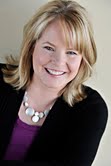- Home
- About Us
- The Team / Contact Us
- Books and Resources
- Privacy Policy
- Nonprofit Employer of Choice Award

 Are you in a small shop? Have you been holding back on doing planned giving because you’re just too strapped for time, or have too little budget? A planned-giving program doesn’t have to cost very much—and if you don’t get started now, you might miss the boat.
Are you in a small shop? Have you been holding back on doing planned giving because you’re just too strapped for time, or have too little budget? A planned-giving program doesn’t have to cost very much—and if you don’t get started now, you might miss the boat.
According to Dr. Russell James’ research (which you can read all about at his website), the oldest boomers will start reaching age 72 and up in about five years’ time. In Canada, life expectancy is 80 for men and 84 for women. Are you ready for the wealth transfer uptick that will start happening when boomers start passing away?
So what’s a small nonprofit to do, even with very little budget? The answer is: lots. This month’s tip is to follow these steps to get started:
1. Make the case
Often the hardest step is convincing your leadership to jump on board with a planned-giving program. Let them know that bequest dollars to charities are multiplying; that planned giving might increase your total revenue by 50 per cent or more in the next ten years (if you commit to starting now); and, finally, let them know that donors are unlikely to leave you a planned gift unless they’re asked.
2. Do some prospect research
Go into your database and pull the following four groups: those who go by the ‘miss’ honorific, monthly donors, loyal donors, and major donors. Check out the article I wrote called Finding diamonds in your database for more detail.
3. Crunch some Numbers
To help make the argument for a small investment in planned giving, crunch some numbers. Take the total number of prospects you came up with in step #2 above and multiply it by 0.5 per cent. Now multiply it again by whatever your organization’s average bequest is (or use $35,000 if you’re unsure). How’s that for a nice number? It’s also a very conservative number: with a good planned-giving program in place, you should expect 1 to 2 per cent of your file to leave a bequest to your organization. Always better to be conservative and exceed expectations, though.
If you want to go a little farther in terms of prospect identification, you can also look for some of Dr. James’ indicators of bequest likelihood:
She’s Past President of the Ottawa Chapter of AFP, President-Elect of the AFP Foundation for Philanthropy-Canada, and a member of AHP, NTEN, the CMA and CAGP.
Contact her by email; follow @LeahEustace.